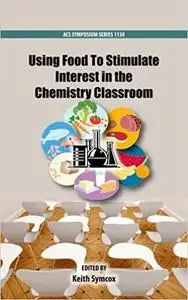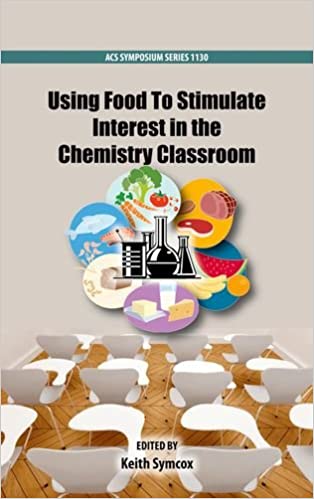Keith Symcox, "Using Food To Stimulate Interest in the Chemistry Classroom"
English | 2013 | pages: 167 | ISBN: 0841228183 | PDF | 3,0 mb
English | 2013 | pages: 167 | ISBN: 0841228183 | PDF | 3,0 mb
Our survival as a species depends upon our ability to discriminate between things that are nutritious and those that are poisonous. As omnivores, we must make many more food decisions than either an herbivore or a carnivore. Our brains are configured so that the pleasure centers are activated when we eat foods that will provide safe calories, and so that the flight reflexes are triggered when we eat foods that are poisonous (1). But how do our bodies recognize which chemical entities are nutritious and which should be avoided? How do humans make these food choices? These are questions that are fundamental to the idea of life, and so relevant to any student, no matter what their major in college. As anyone who has taught a class knows, showing students the relevance of the material you are trying to teach is a crucial step to student learning.
This volume comes about as a result of the efforts of the authors to enhance student interest in chemistry based upon their presentations at the 22nd Biennial Conference on Chemical Education, held at Pennsylvania State University from July 29 to August 2, 2012. This volume is divided into two sections. In the first section, we describe the efforts by the authors to design entire courses around the concept of food chemistry. These courses range from short courses for non-majors, to specialty courses on specialty topics such as beer production, to senior level capstone courses for majors that seek to tie together the undergraduate curriculum. They range from courses that focus completely on the chemistry of the system, to those which explore the cultural, psychological, sociological, or political facets of food chemistry and the food systems that support our civilization. The commonality of these courses is the observation by the instructors that student interest and learning is enhanced. Even when presenting material that in other contexts would be considered difficult or "dry," the student interest and enthusiasm is unabated.
In the second section, we deal with authors who have used food chemistry to enhance specific activities that will make a course more interesting. Whether these are novel experiments, new activities, or opportunities for enhancement of the education of the instructor, these authors show us how to implement the ideas behind food chemistry in a way that will make any course better and enhance student interest in chemistry.
My Link



